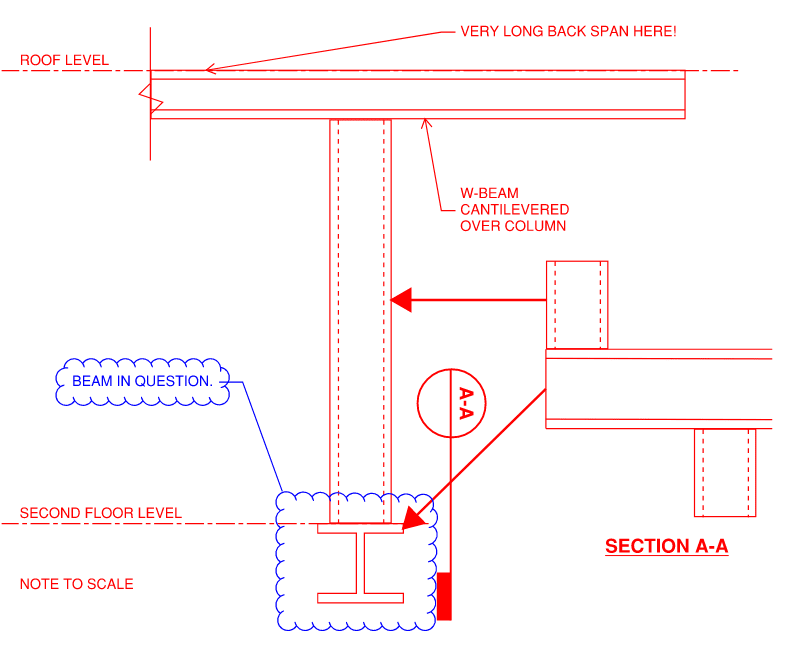flashyyc15
Structural
Hi all,
I'd just like to get your thoughts about the structural framing shown below. Some information:
[ul]
[li]W-Beam at roof level is cantilevered over HSS column[/li]
[li]HSS column is in turn supported by another W-beam at second floor that happens to also be cantilevered over an HSS [/li]
[/ul]
For my questions:
[ul]
[li]Will the beam at the second floor take any torsion at all based because of the unbalanced moments at the top of the HSS column? The roof beam cantilevers over the column and has a very long back span.[/li]
[li]I was told by a colleague that we can get rid of torsion by either: 1) stiffness or 2) deliberate detailing of the connections. Can anyone provide thoughts on what this means?[/li]
[/ul]
Any thoughts/opinions will be very much appreciated.
Thank you.

I'd just like to get your thoughts about the structural framing shown below. Some information:
[ul]
[li]W-Beam at roof level is cantilevered over HSS column[/li]
[li]HSS column is in turn supported by another W-beam at second floor that happens to also be cantilevered over an HSS [/li]
[/ul]
For my questions:
[ul]
[li]Will the beam at the second floor take any torsion at all based because of the unbalanced moments at the top of the HSS column? The roof beam cantilevers over the column and has a very long back span.[/li]
[li]I was told by a colleague that we can get rid of torsion by either: 1) stiffness or 2) deliberate detailing of the connections. Can anyone provide thoughts on what this means?[/li]
[/ul]
Any thoughts/opinions will be very much appreciated.
Thank you.

